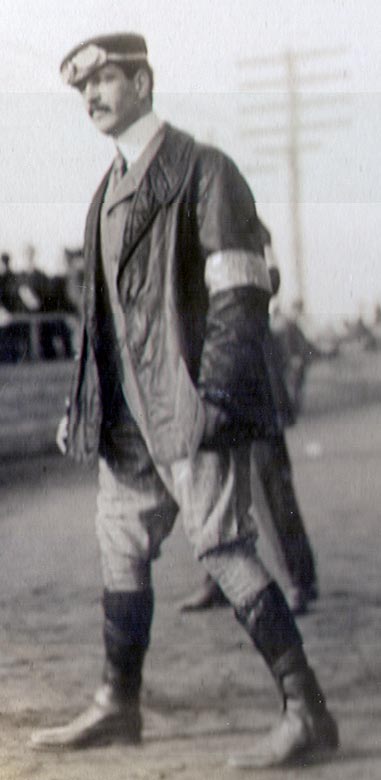An Armband Discovery and a Lantern Mystery

Since 2008, I have been searching for a Vanderbilt Cup Race brassard (armband) reportedly found in the historic Malcolm House. As seen on the arm of William K. Vanderbilt, Jr, officials and press wore these distinctive armbands to allow access to the course. Last week my search for the Malcolm brassard took me to the archives of Nassau County Department of Parks, Recreation and Museums. I was not disappointed!
Dr. William J. Malcolm was a physician for the 1908 and 1909 races who lived directly on the 1908 course in the hamlet of Jericho. In this 1909 program guide he was listed as one of the 24 "assistant surgeons".
Eureka!! I found it!! I was able to document it with my trusty Canon camera.
Since only 50-100 brassards were made for each race, they are highly collectible. These four brassards are owned by the Garden City Chamber of Commerce. They were donated by Crawford Robertson, son of George Robertson, the winner of the 1908 Vanderbilt Cup Race.
This is the only brassard in my collection. Since the brassards for the 1905 to 1910 races always included the race date, it is likely this armband was worn by a physician for the 1904 Vanderbilt Cup Race.
Here chief surgeon Louis Lanehart can be seen driving with William K.Vanderbilt, Jr. on the 1905 Vanderbilt Cup Race course.
Among the thousands of items that have been donated to Nassau County, here is one item that has never been correctly identified. Does anyone know what this rather large lantern was used for?
February 28, 2010 Update: See comment below.







Comments
Howard,
The lantern in question is a railroad lantern. Kerosene fired with reflector-focus. These were spares to be used if the main headlight on a locomotive failed. The base would have fit in a female receptacle near the main light. Occasionally crews would use the spare to supplement the driver lights. It was also used, and carried in the caboose, for repairs, oiling and water. As such it was also designed to sit on the ground.
Some versions allowed lateral movement and some vertical movement and some both. Railroad drive lighting and emergency lighting was quite important and innovative. Many patents were issued in this field. Trains were for the 19th century and a portion of the 20th Century the fastest moving things that man relied on. Railroads have operated in night, and dark conditions including tunnels, almost from their inception.
Likely the Vanderbilt Cup Races and almost any other venue of the time would have used the readily available railroad equipment suppliers. Pennsylvania was noted as a supplier of quality kerosene and battery lighting, in part due to the number of railroads; The Pennsylvania (Pennsy), Erie, Lehigh, Reading & Philadelphia (later Reading Lines), Delaware and Hudson(D&H), Central of New Jersey (CNJ), Central and New England (CNE), New York Central and many others that did business in the State or nearby.
Also the coal mining industry used lighting, albeit not of the kerosene variety (except in emergency) due to ventilation
Hi Cyril:
Thanks so much for the identification. I will forward to Gary Hammond, chief curator of the Nassau County Museum System.
Howard
Thank you amazing blog, do you have twitter, facebook or something similar where i can follow your blog
Sandro Heckler
Hi Sandro:
Thanks for the feedback. You can follow VanderbiltCupRaces.com on both Twitter and Facebook. Look for the t and f on the header on top of every page,